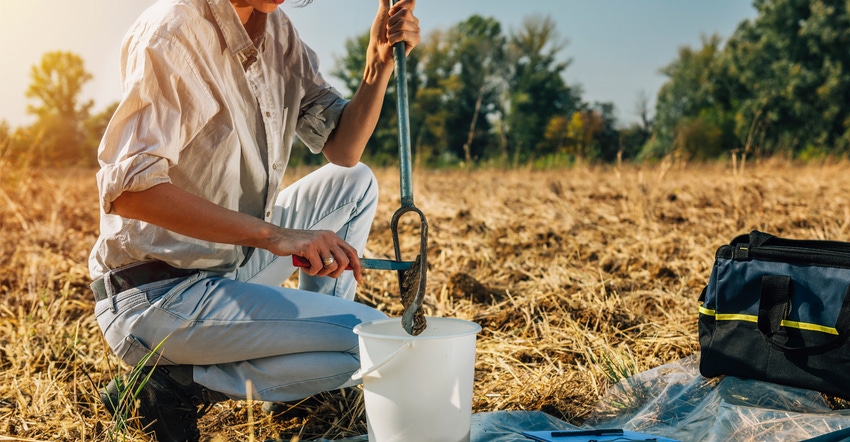
A new generation of soybean cyst nematode is born every 24 days in the summer. That’s three to six generations. And each female cyst can contain more than 250 eggs.
To help growers battle this yield-robbing pest, the Soybean Cyst Nematode Coalition, funded by the Soybean Checkoff, gave the Kansas State University Plant Disease Diagnostic Lab a grant to “Take the test. Beat the pest.” For a limited time, the diagnostic lab is offering free SCN testing for Kansas soybean growers.
Central Kansas and beyond
SCN has been identified in 59 Kansas counties that produce more than 85% of the state’s soybean crop. Most of those are in central and eastern Kansas, but SCN has been found as far west as Ford and Finney counties.
According to the SCN Coalition, the pest is present in nearly all soybean-growing geographies. Operating out of sight, underground, the only way to scout for SCN is to soil-test. SCN causes damage when the nematodes enter the plant roots, feeding off nutrients and water from the plant. That ultimately reduces the yield potential of the soybean plant by up to 30%.
K-State’s Rodrigo Onofre, plant pathology postdoctoral fellow, and Timothy Todd, nematologist, encouraged growers in the Oct. 7 Agronomy eUpdate to test this fall after soybean harvest so that management strategies can be implemented before the next growing season.
Testing tips
To collect a SCN sample for the diagnostic lab, you’ll need:
1. a soil probe or sharpshooter spade
2. a bucket
3. a labeled bag with the field ID, the size of the area sampled, and the crop history
“If your field is fairly uniform, divide it into quadrants for your SCN sample collection,” the eUpdate. instructs. “Sections of the field that have had different cropping histories or have a different soil type should be sampled separately.” Collect 10 to 20 core samples to a depth of 6 to 8 inches for each quadrant.
The experts recommend a systemic pattern to walking a field collecting samples. Once you’ve collected 10 to 20 soil cores, empty them into the bucket, mix well, and then collect 1 pint of soil, or about 2 cups, in the labeled plastic bag, and seal it.
Handling samples
Properly handling the samples before they’re mailed off to the lab for analysis can affect the result. Onofre and Todd stress that results will only be as good as the sample sent to the lab.
They advise soybean growers to:
• Keep samples refrigerated until shipping.
• Send samples overnight, because time is crucial.
• Avoid leaving samples in the sun, which can kill nematodes.
There’s a plant diagnostic check sheet at bit.ly/kstatescntest that can help farmers. Or, you can watch an informational video at bit.ly/youtubescnvideo.
For free SCN testing, ship samples to: K-State Plant Disease Diagnostic Lab, 4032 Throckmorton PSC, 1712 Claflin Road, Manhattan, KS 66506.
Kansas State Department of Agronomy and the SCN Coalition contributed to this article.
About the Author(s)
You May Also Like






